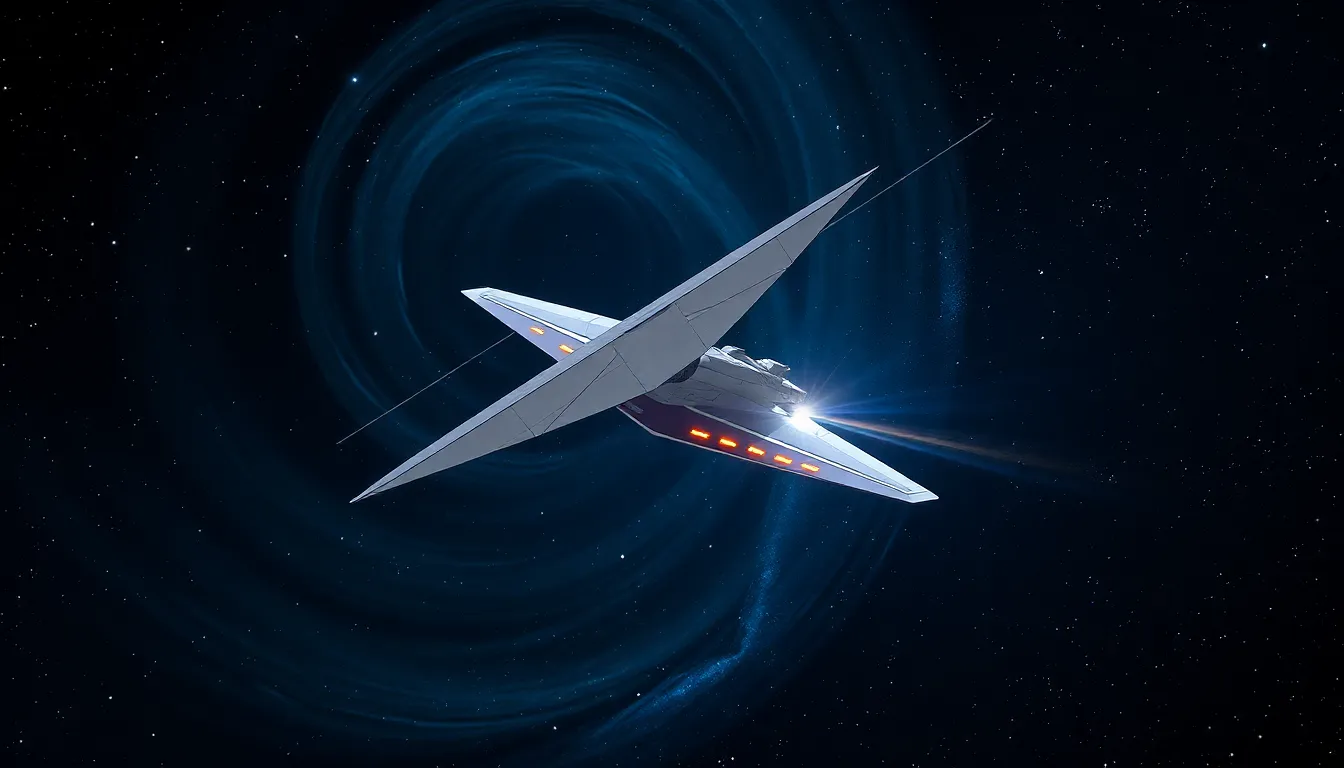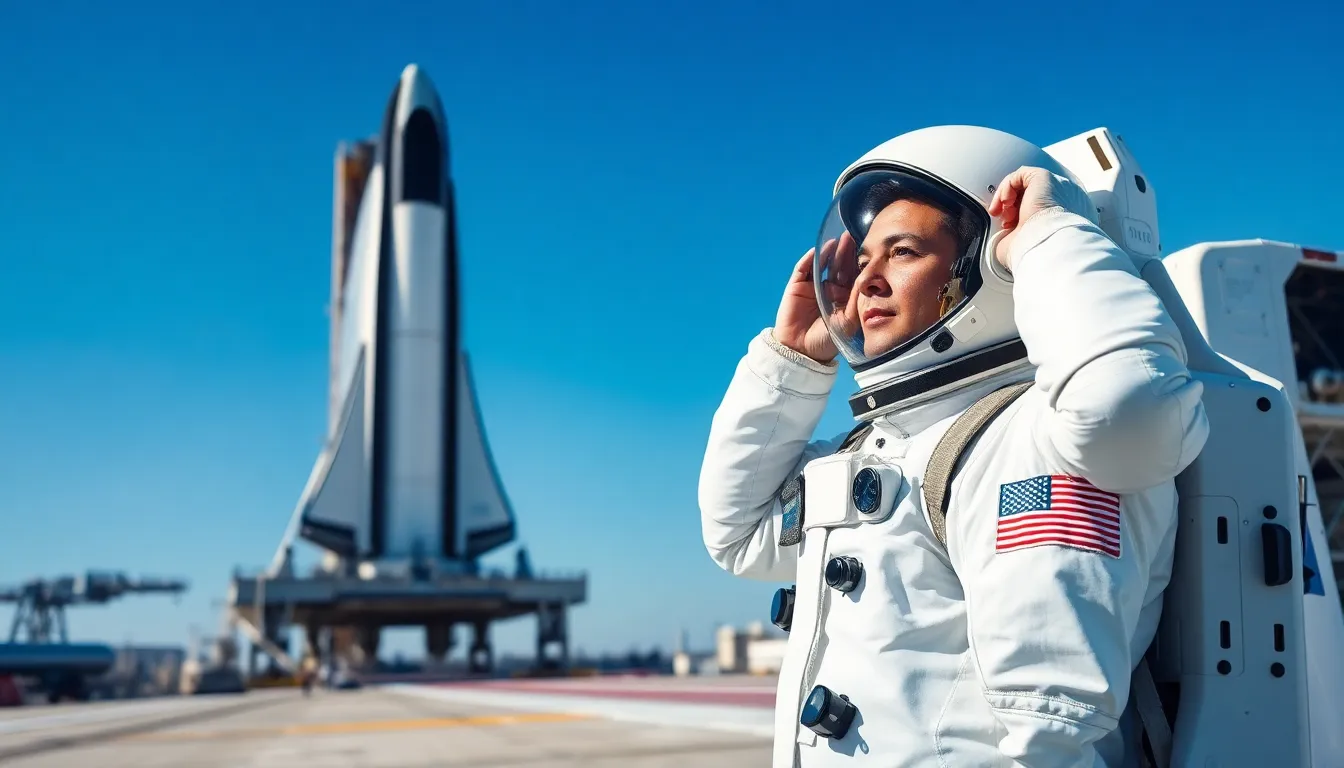Space: the final frontier where dreams of interstellar vacations and alien encounters dance in our heads. But before packing those space suits and sunscreen, it’s crucial to ask—how far can we actually travel with today’s technology? While the universe is vast and full of wonders, our current spacecraft are more like family sedans than rocket-powered Ferraris.
Table of Contents
ToggleUnderstanding Current Space Travel Technology
Current space travel technology provides insight into the boundaries of exploration. Different spacecraft types serve various purposes, each with unique capabilities.
Types of Spacecraft
Spacecraft can be categorized into crewed vehicles, uncrewed satellites, and rovers. Crewed vehicles, like the SpaceX Crew Dragon, transport astronauts to the International Space Station. Uncrewed satellites gather data about planets and asteroids. Rovers, such as Mars rovers, perform surface exploration on celestial bodies. Notably, spacecraft must withstand harsh environments while carrying out their missions. All types contribute to our understanding of space but possess limitations based on their designs and functions.
Propulsion Systems
Propulsion systems play a crucial role in space travel efficiency. Chemical rockets, the most common system, use combustion to generate thrust. Ion propulsion systems offer a more efficient alternative, providing continuous acceleration over long distances. Nuclear thermal propulsion leverages nuclear reactions, promising rapid travel to distant destinations. Recent advancements in electric propulsion further enhance spacecraft maneuverability. Each propulsion method has distinct advantages, impacting how quickly and efficiently spacecraft can explore the cosmos.
Recent Advances in Space Exploration

Recent advances in space exploration emphasize significant developments in technology and mission achievements. Innovations in propulsion and spacecraft design enhance the potential for greater distances.
Breakthrough Technologies
Current technologies like ion propulsion, solar sails, and autonomous navigation systems mark pivotal breakthroughs. Ion propulsion, utilized by NASA’s Dawn spacecraft, provides efficient thrust for long-duration missions. Solar sails harness sunlight for propulsion, allowing spacecraft to travel vast distances without fuel limitations. Autonomous navigation systems enable spacecraft to operate independently, increasing mission success rates. These advancements expand the possibilities for deep-space exploration and improve maneuverability in complex environments.
Notable Missions
Notable missions showcase the capabilities of modern technology. The Parker Solar Probe, launched in 2018, orbits the Sun at unprecedented speeds, gathering crucial data about solar winds. The Perseverance rover on Mars, equipped with sophisticated instruments, searches for signs of ancient life on the planet’s surface. Voyager 1 and 2, although launched in the 1970s, continue to send valuable data from interstellar space, illustrating the longevity and resilience of space missions. These missions highlight the ongoing commitment to exploring the universe and understanding its mysteries.
Limitations of Current Technology
Current technology faces significant constraints in space travel, limiting both distance and time capabilities.
Distance Constraints
Distance represents a primary limitation in space exploration. Existing spacecraft typically only travel within our solar system. For instance, Voyager 1, the farthest human-made object from Earth, resides about 14 billion miles away, a journey that took over 43 years. Current propulsion systems, like chemical rockets, lack the speed required for interstellar travel. Meanwhile, ion propulsion offers more efficiency but still struggles to cover vast distances at a practical pace. With these limitations, reaching even the nearest star, Proxima Centauri, at a distance of 4.24 light-years, would take thousands of years using today’s technology.
Time Constraints
Time constraints also restrict the scope of possible missions. Current crewed missions, such as those involving the International Space Station, typically last a few months. Long-duration spaceflight presents challenges for crew health and mission viability. Consider the journey to Mars, taking about six to nine months with current technology. Other deep-space missions, like the Parker Solar Probe, while groundbreaking, only provide data over extended periods. The lengthy timelines required for significant missions limit the potential for timely exploration and discovery in the vast universe. Spacecraft design and life-support systems must evolve to support quicker round trips to distant celestial bodies.
Future Prospects for Space Travel
Advancements in space technology point towards exciting possibilities for future travel. The landscape of space exploration is evolving, leading to innovative solutions for reaching distant destinations.
Potential Developments
Breakthroughs in propulsion systems promise to dramatically reduce travel times. Concepts like the Alcubierre warp drive and fusion propulsion offer theoretical frameworks for faster-than-light travel. Researchers actively explore these technologies, which could one day enable journeys to nearby stars within a human lifetime. Additionally, advancements in spacecraft design aim to enhance life-support systems, ensuring crew safety on extended missions. Investments in artificial intelligence facilitate better navigation and mission efficiency, paving the way for deeper exploration of our solar system and beyond.
The Role of Private Sector
Private companies are transforming the space travel landscape. SpaceX, Blue Origin, and Virgin Galactic are leading the way in developing reusable rockets and innovative spacecraft. They continuously push the limits of technology, reducing costs and increasing access to space. Public-private partnerships cultivate further growth in the industry, driving government agencies and private companies to collaborate on mission goals. Enhanced competition among these entities accelerates advancements, catalyzing new techniques for space exploration. The influx of private investment brings fresh ideas to the table, setting the stage for unprecedented milestones in human space travel.
Current technology limits humanity’s reach in space exploration. While advancements in propulsion and spacecraft design show promise for the future, significant hurdles remain. The vast distances within our solar system still take years to traverse, and interstellar travel remains a distant dream.
Innovations in the private sector and ongoing research into advanced propulsion systems could change the game. As scientists and engineers continue to push the boundaries of what’s possible, the potential for deeper exploration grows. The journey into the cosmos is just beginning, and with each step forward, the possibilities expand. The quest for knowledge and discovery continues to inspire and ignite curiosity about the universe beyond our own.




